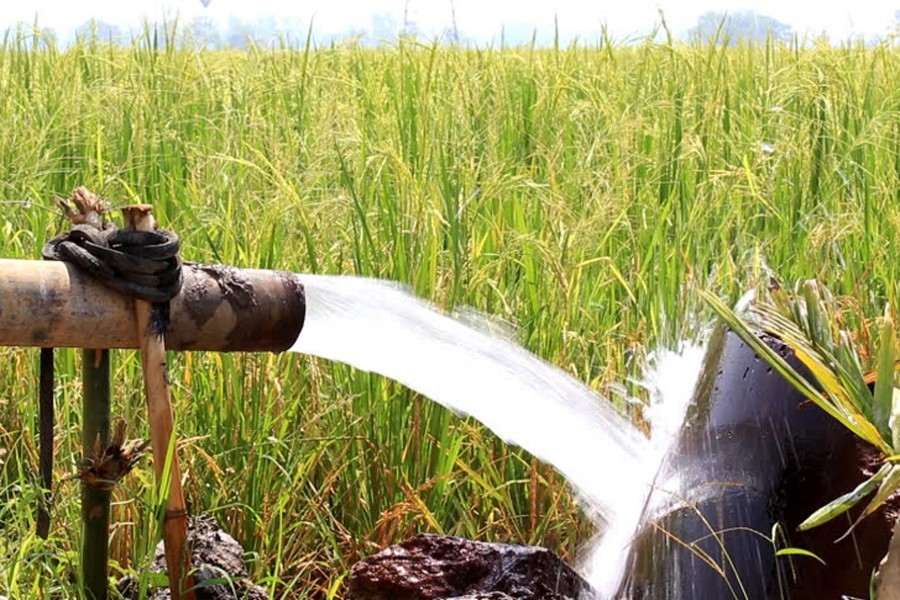Bangladesh is an irrigation-water-scarce country in the absence of sufficient surface water for the purpose. As a consequence, farmers all over the country are to depend increasingly on underground water irrigation method. But excessive use of underground water for irrigation purposes has proved ruinous for the ecological balance of the country. Under the circumstances, of late, a new technology termed Adoption of Alternate Drying and Wetting (AWD) irrigation technology to save huge amount of underground water for irrigation purposes has been innovated. Minimum 30 per cent of irrigation water during the Boro rice farming season could be saved by substantially reducing pressure on underground water through the AWD irrigation technology. To cope with the scarcity of irrigation water, experts suggested for large-scale adoption of this simplest and effective technology.
Farmers generally use 3,000 to 4,000 litres of irrigated underground water to produce one kilogramme of Boro rice, whereas it needs only 1,500 to 2,000 litres when the AWD irrigation technology is used. The AWD irrigation method determines irrigation times in growing Boro rice in the fields. And it requires only a 7 to 10 centimetres diameter and 25 centimetres long PVC pipe or hollow bamboo pieces or waste bottles of cold drinks for the purpose. Fifteen centimetres on one side of the pipe is perforated for horizontal movement of water. And it is to be installed vertically with its perforated portion under the ground level and the soil within it is to be scooped out to make the soil at the pipe's lower end visible.
The farmers should irrigate Boro fields in such a way that water does not overtop the perforated portion, watch leaching down of water through the pipe and irrigate when soil at bottom of the pipe is visible with no water standing on soil hat. Horticulture specialists said that in recent years the AWD irrigation technology has been becoming popular among farmers in all the five districts under Rangpur agriculture region. In the year 2018, some 46,216 farmers of the region used the AWD irrigation technology in cultivating Boro rice on their 3,297 hectares of land to increase rice output at lower costs reducing the use of irrigation water substantially. Experts are of the opinion that farmers could largely be benefited by using AWD technology for reduced irrigation frequencies, improved water use efficiency, less use of diesel, electricity and increased rice yield, thus reducing the cost of production and saving underground water.
Farmers have already started reaping benefits of the AWD technology following its dissemination to them by different agriculture related organisations. Lifting of underground water must be reduced to the minimum as the future of agriculture depends on availability of water amid a formidable threat of climate change. If the AWD method is adopted for farming Boro rice on all 4.8 million hectares of land in the country, 2.4 million tonnes of additional paddy worth Tk 64.0 billion could be produced annually along with a saving Tk 8.0 billion for less use of diesel and electricity.
In addition to this substantial benefits to the farmers in particular and the country in general, production of 500 kilogrammes of more Boro rice per hectare through the adoption of the simplest and effective AWD technology can save at least 30 per cent underground water, 30 litres of diesel-otherwise required for irrigation. The country's agriculture sector is facing severe threat due to changing climate. As a result, experts also favoured for crop zoning to cultivate more irrigation water consuming crops in the southern zones and less water consuming crops in the drought-prone northern zones of the country.
Sarwar Md Saifullah Khaled is a retired Professor of Economics, BCS General Education Cadre.


